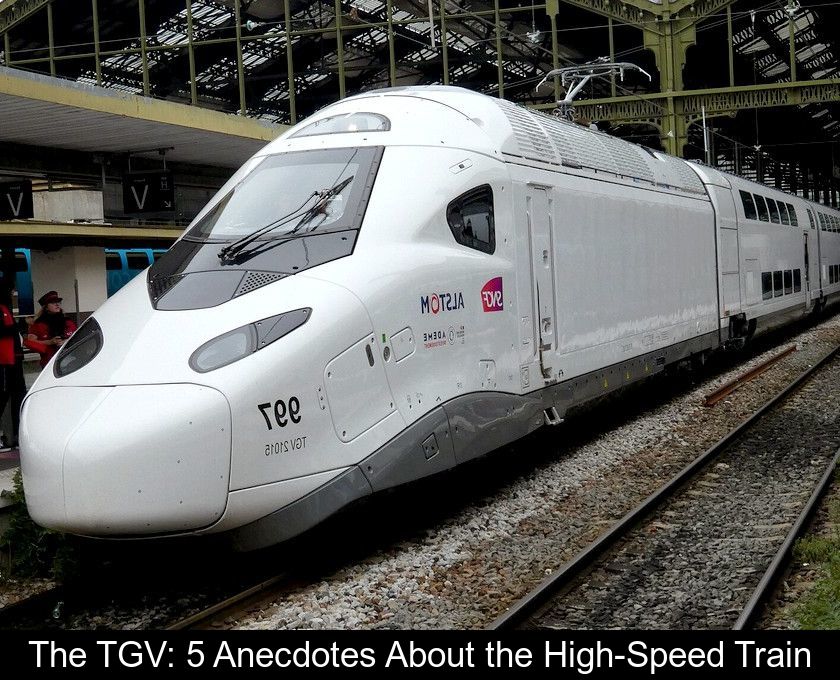The Tgv: 5 Anecdotes About The High-speed Train
The TGV celebrated its 40th anniversary in 2021. Since the inauguration of the first high-speed line in 1981, this iconic French train has continued to innovate, expand its network, and break records. Here are 5 unusual anecdotes that you probably don't know about this high-speed train.
The French TGV is inspired by the Japanese Shinkansen.
Contrary to what some patriotic minds might believe, France did not invent the first high-speed train. The project to build a high-speed train to connect the main cities of France emerged in the 1960s, taking Japan as a model.
Japan embarked on the construction of the world's first high-speed train, the Shinkansen, in 1959. It went into service in 1964, seventeen years before the first TGV! The world's first high-speed line connected Tokyo to Osaka.
The first prototype was powered by gas.
With this high-speed train project, the SNCF hopes to restore the attendance of its trains, which has been in constant decline during the 1960s. The company is betting on increasing speed to more effectively compete with cars and airplanes.
As surprising as it may seem today, the very first version of the TGV was powered by gas turbines. The first prototype, named TGV 001, is the only trainset of its kind ever built. It reached a speed of 318 km/h, a figure that remains, to this day, the world record for rail speed in thermal traction.
Starting in 1973, the oil crisis forced the SNCF to modify its high-speed train and to choose electric traction, with current supplied by overhead lines and collected by pantographs.
The switch to electric traction reinvigorated the research and test program starting in 1974. The prototype Z 7001 (nicknamed Zébulon) covered approximately one million kilometers in test runs to try out different innovations.
The TGV owes its appearance to a Franco-British designer.
In March 1974, President Pompidou initiated the French high-speed train project and the government approved the construction of a high-speed line between Paris and Lyon: the LGV Sud-Est (LN1).
Travelers were able to take the TGV between these two cities starting from September 27, 1981, for a journey that lasted 2 hours and 40 minutes, compared to 1 hour and 45 minutes today. However, they probably didn't know that the flagship of the SNCF owed its distinctive shape to Jacques Cooper, a designer of Franco-British origin!
Jacques Cooper passed away on April 16, 2024, at the age of 93. Henri Poupart-Lafarge, CEO of Alstom, paid tribute to him by saying, "He has forever marked the railway sector by designing the distinctive nose of the orange TGV, which paved the way for high-speed travel in France."
He holds a speed record that remains unmatched to this day.
On February 26, 1981, a first speed record was set on the LGV Sud-Est at 380 km/h. This record was primarily aimed at reassuring future travelers by demonstrating that the 260 km/h at which they would soon be transported could be achieved safely.
In 1988, the speed record exceeded the symbolic mark of 400 km/h. On May 18, 1990, the TGV set the world speed record at 515.3 km/h on the LGV Atlantique. It is the last certified record of the high-speed train, still unmatched.
On April 3, 2007, on the LGV Est Européenne, SNCF broke its own record by running test train 4402 at a speed of 574.8 km/h.
A new TGV is announced for 2025.
The fifth generation of high-speed trains, or TGV M, is expected to hit the tracks starting in 2025. This train, recognizable by its elongated nose and white color, is a concentration of technical innovations.
More aerodynamic and 97% recyclable, this new TGV will be fully connected. It will be capable of regulating onboard energy use and promises to reduce energy consumption by 20% compared to current trainsets.
In addition to displaying a better carbon footprint, Alstom's latest model promises to revolutionize the passenger experience. The trainsets will be fully modular and able to accommodate 20% more passengers, with a capacity of 740 travelers compared to 600 at present. The dining car will also be revamped, featuring two levels and equipped with large screens.
With trials having started in June 2023, it's already safe to say that the train of the future is on track.







